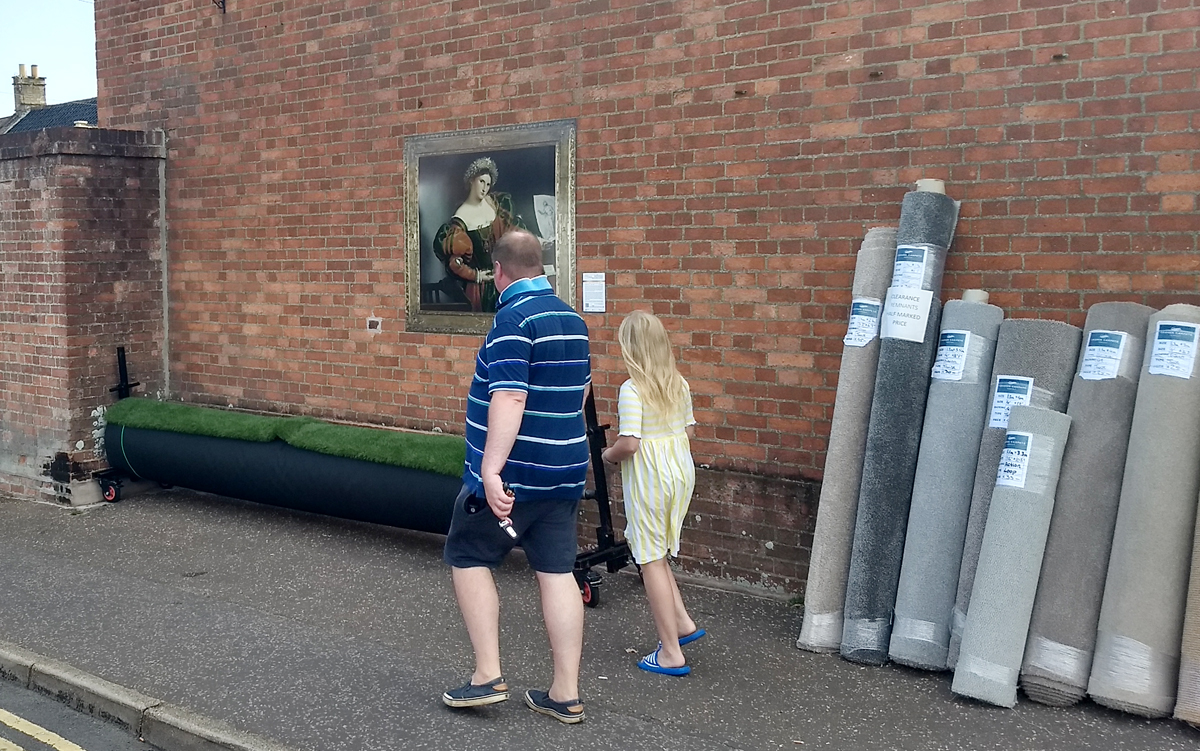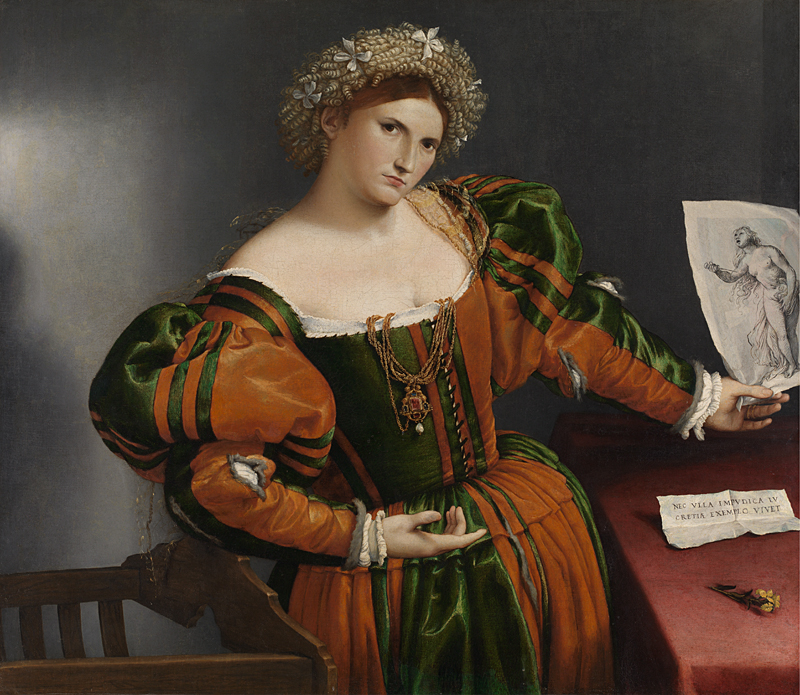Lotto’s portrait can be found outside Cromer Carpets on the Croft
Portrait of a Woman inspired by Lucretia, 1530
Lorenzo Lotto
Oil on canvas, 96.5 x 110.6 cm
A sumptuously dressed young woman holds a drawing of the Roman heroine Lucretia. The story of Lucretia, who lived in the early sixth century BC, is told in Livy’s History of Rome. Prince Sextus Tarquinius crept to Lucretia’s room at night and raped her. She told her father and husband, who were unable to dissuade her from killing herself.
Read more at NationalGallery.org,uk
Lorenzo Lotto
Lotto was one of the leading Venetian-trained painters of the earlier 16th century. He painted portraits and religious works exclusively. His early works are strongly influenced by Giovanni Bellini. Lotto was active in various places in Italy and absorbed a wide range of other influences, from Lombard realism to Raphael. He was deeply religious and his late paintings become intensely spiritual.
Unable to compete with Titian, Lotto worked mainly outside Venice. He is recorded at Treviso in 1503, then in the Marches, and in Rome, probably in 1508. From 1513 to 1525 he resided mainly at Bergamo in Lombardy, where he painted several major altarpieces. A period in Venice from 1526, with long absences, was followed by his retirement to a religious establishment at Loreto in 1552.
Lotto’s later paintings are recorded in an account book and diary which he kept from 1538. His works are characterised by the use of deeply saturated colours, bold use of shadow, and a surprising expressive range, from the nearly caricatural to the lyrical. He is one of the most individualistic of the great Italian painters.



